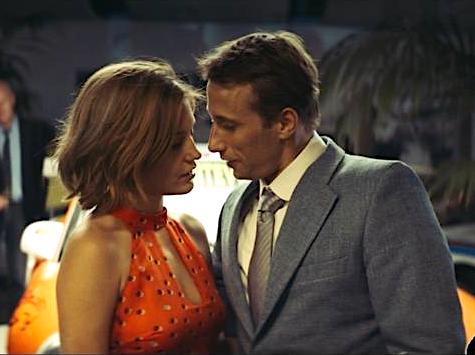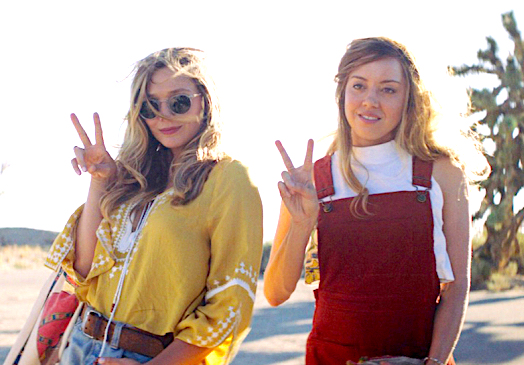The curtain-raiser for the 61st London Film Festival was Breathe, not only Andy Serkis’s debut as a director, but also a film based on the family experiences of its producer, Jonathan Cavendish. It was the story of how his father Robin, a tea broker in Kenya in the late 1950s, met and married Diana but then contracted polio, which left him paralysed. The couple’s determined battle against his condition eventually brought about some revolutionary developments in the treatment of severely disabled patients.
Serkis and screenwriter William Nicholson have approached the project with crusading zeal, which produces some revelatory moments but tends to overdose on its own good intentions. Since the film is the story of the producer's parents, hard-headed critical rigour was never likely to be the order of the day, and the pervasive air of splendid chaps keeping a stiff upper lip under testing circumstances begins to grate. Andrew Garfield puts up a good fight as Robin Cavendish, but since he’s confined to a bed or a wheelchair (albeit a revolutionary one with built-in breathing apparatus) for most of the running time – having previously been an enthusiastic sportsman and pilot – he mostly has to communicate through facial expressions. Some of these become somewhat over-used, particularly his over-semaphored rictus of delirious delight.
Most of the plaudits belong to Claire Foy, who brings a finely-judged mix of concern, compassion and bloody-minded determination to the role of Diana. When her husband despairs and wants to die, she refuses to let him. “You can’t love this,” he says, helplessly bedridden. “Well, apparently I can,” she retorts. There’s some peculiar though, under the circumstances, welcome light relief from Tom Hollander, who plays both of Diana’s twin brothers simultaneously, while Hugh Bonneville brings bluff bonhomie accompanied by vintage wines to his portrayal of Teddy Hall, the Oxford professor who created Robin’s special wheelchair. The liberating effect of this invention is startlingly illustrated when the Cavendishes visit a German clinic where immobilised patients are kept in morgue-like boxes with only their heads visible. It’s a salutary tale, but making popular entertainment out of debilitating illness is a notoriously difficult trick to pull off.
 Racer and the Jailbird
Racer and the Jailbird
The original title of this Franco-Belgian crime thriller – Le Fidèle – is far more apt than its daft Anglicised substitute, since it’s a story of the strange consuming love that grows between professional bank robber Gigi Vanoirbeek (Mathias Schoenaerts) and Bibi Delhany (Adèle Exarchopoulos, both pictured right), the Porsche-racing daughter of a construction magnate. Gigi sweeps up Bibi at the race track, introduces her to his tight-knit crew of old buddies at a raucous party in a Brussels restaurant, and white-hot romance ensues. But Bibi becomes increasingly uncomfortable with Gigi’s weekends away, which mysteriously seem to coincide with violent criminal episodes. Gigi’s pretence of being a car dealer doesn’t fool Bibi’s father, but père is willing to cut him some slack if he’s going to be the guy to make his beloved daughter happy.
Against the odds, it’s a love affair for the ages, and the two charismatic leads successfully bring a haunting telepathy to their relationship. Director Michaël R Roskam excels in some thrilling action sequences, especially a breathtaking motorway heist which carries distinct echoes of Michael Mann’s Heat (it’s no crime to steal from the best). What you wouldn’t predict is the way the story extends into a kind of mystical afterlife, after the lovers have negotiated a minefield of corruption and organised crime. The concluding sequence, a ghostly drive at dawn through a deserted Brussels, is weirdly perfect. ★★★★
 Ingrid Goes West
Ingrid Goes West
This debut feature by Matt Spicer is a piercingly smart satire on the corrosive vapidity of social-media culture. Aubrey Plaza (Parks and Recreation, Legion) is the titular Ingrid, who we first see pepper-spraying the “friend” who hasn’t invited her to her wedding. We learn that Instagram junkie Ingrid is a girl on the edge of a breakdown, reeling from the death of her mother and incapable of forming meaningful relationships with actual people.
Her infatuation with the vanity-fest online life of the brilliantly-named Taylor Sloane (Elizabeth Olsen, pictured above with Plaza) takes her out on a stalker-mission to Los Angeles, where she remorselessly insinuates herself into Taylor’s life (eg she kidnaps her dog, then poses as the concerned citizen restoring the mutt to its grieving owner). Soon the pair are best pals, selfieing their way around the Golden State, communicating in soundbite hyperbole - “I love that”, “it’s the best”, “you’re the most fantastic person I’ve ever met” etc. Just as quickly, Taylor’s fleeting patronage times out. Ingrid’s heroine-worship turns ugly, her darkening mental spiral intensified by the arrival of Taylor’s brash, bullying brother Nicky (Billy Magnussen). Social one-upmanship escalates into open warfare, as Spicer spotlights the disconnect and dysfunction underpinning Ingrid’s media-neediness. ★★★★















Add comment